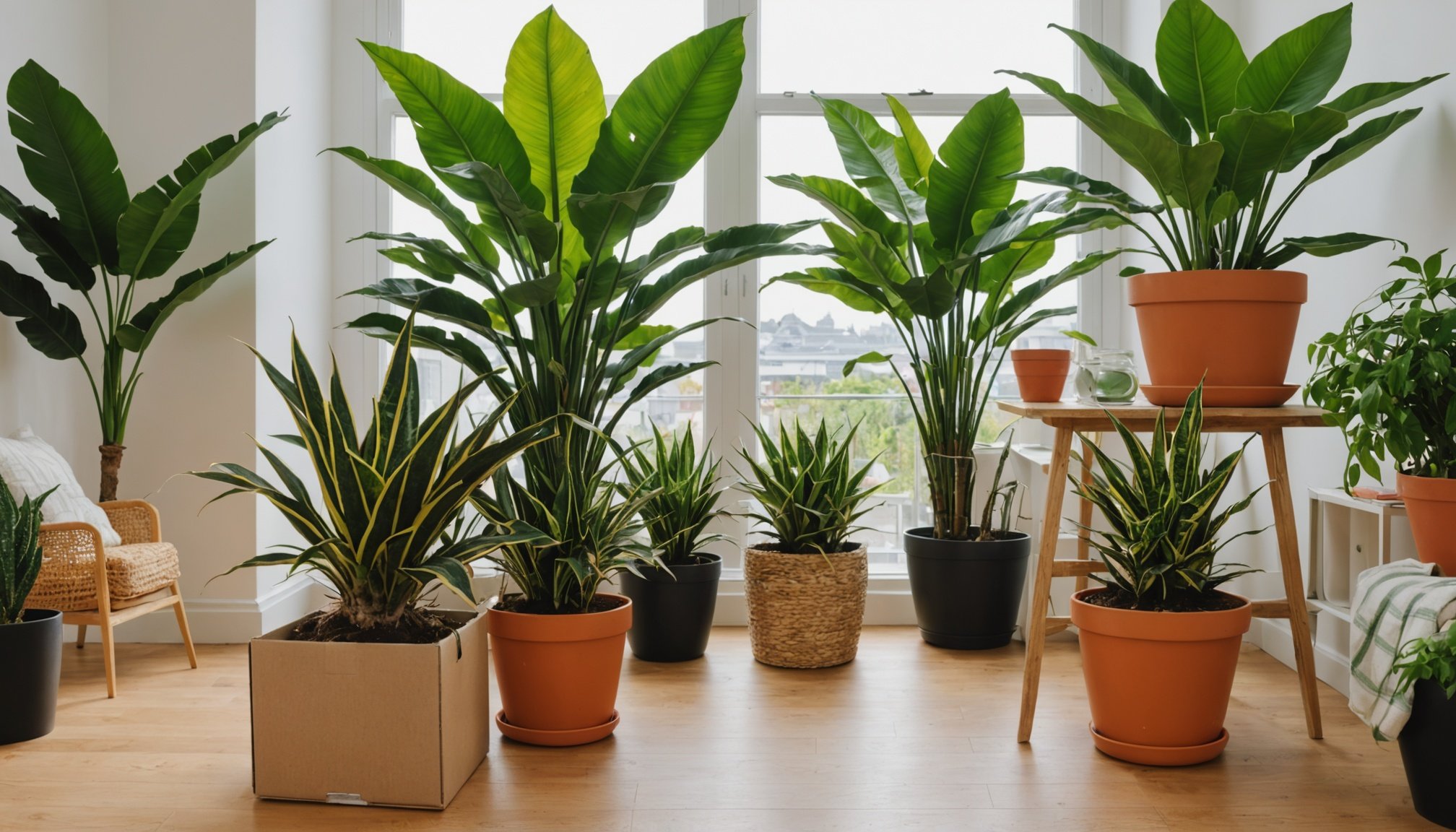Preparing Your Exotic Plants for Relocation
When moving house with plants, ensuring their safe relocation requires careful planning. Begin with assessing plant health to determine which are ready to be relocated. Identify signs of stress, such as yellowing leaves or wilting, as these may indicate a plant requires additional care.
Adapting to a move involves adjusting watering and fertilization schedules. Two weeks before the move, reduce watering to prevent root rot, but ensure they remain hydrated. Gradually decrease fertilization to allow plants to adjust to potential soil changes.
A voir aussi : Essential Tips for Safely Transporting Your Vintage Car Across the UK
Address potential pest problems by thoroughly inspecting each plant. Check for insects and use eco-friendly pest control solutions. This step is crucial not only for the plants’ wellbeing but also to prevent the spread of pests to a new location. Quarantine affected plants from healthy ones until the issue is resolved.
Caring for exotic plants during a move is a delicate process requiring attention to detail and careful observation. These steps help ensure a successful relocation and the continued health of your beloved green companions. Whether you’re moving across town or across the country, having a well-prepared plan can make all the difference.
Dans le meme genre : Exploring the Cutting-Edge Innovations in Home Moving Technology Across the UK
Packing Techniques for Exotic Plants
Packing exotic plants requires precision to ensure safe transport. Selecting appropriate packing materials, such as sturdy boxes and adequate padding, is crucial. These materials not only protect the plants from physical damage but also cushion them against temperature fluctuations during transit.
When it comes to the packing techniques for various types of exotic plants, different strategies can be employed. For delicate blooms, using soft wrapping materials like tissue paper or foam can help prevent bruising. For plants with fragile stems, securing them with plant-specific holders or supportive structures inside the box can maintain their integrity.
Labeling is another critical aspect. Organize and label each package clearly, specifying plant types and handling instructions. This ensures that anyone involved in the transport process can manage the items with care and attention.
Additionally, consider using plant-specific containers with ventilation features for species that require airflow. This approach accommodates the unique needs of each plant, fostering a climate conducive to their health and vitality during the move.
Employing these methods not only safeguards the plants but also simplifies the transportation process, ensuring that exotic plants reach their destination in pristine condition.
Transportation Considerations
When transporting plants, selecting an optimal transportation method is crucial to ensure their health. Movers often face challenges, but by considering climate factors and regulations, you can navigate these easily.
Travel conditions play a significant role in plant health. Ensuring plants are not exposed to extreme temperatures during transit can be pivotal. If the journey involves long distances, consider methods like climate-controlled vans or plant-specific packaging to maintain conducive environments.
In terms of UK moving regulations, understanding restrictions and requirements is vital. Certain plant species may need certificates due to pest risks. The UK government sometimes imposes restrictions on transporting non-native species to protect local ecosystems.
Before embarking on transporting plants, consult guidelines for the UK, covering everything from prohibited species to documentation standards. This will not only prevent legal issues but also ensure your plants remain compliant with import/export standards.
To thrive during transportation, weather considerations should be prioritized. Avoiding harsh conditions like frost or intense heat can mitigate stress to the plants. For amateurs and professionals alike, being informed about these elements provides peace of mind and promotes healthier plant relocation.
Setting Up in Your New Home
After the hustle of a move, your exotic plants deserve a seamless transition into their new environment. Begin with best practices for unpacking: unwrap and inspect each plant to ensure they survived the journey without damage. Any wilting or discoloured leaves may indicate stress and should be gently pruned.
Re-establishing plants starts with finding the right spot. Consider light, humidity, and temperature, as these factors significantly impact the acclimation process. Gradually accustom them to their new surroundings; avoid sudden changes in light exposure to prevent shock. A plant that thrived in a previous brightly-lit corner may need a few hours of sunlight a day until it fully adjusts.
Acclimating exotic plants requires careful observation. Monitor them closely for signs of distress, such as yellowing leaves or stunted growth. These could indicate issues with soil, humidity levels, or improper light conditions. Addressing these immediate concerns involves adjusting watering schedules or using humidifiers to maintain a suitable environment.
Remember, post-move care is about patience. Plants may take time to adapt, so be attentive to their needs and adjust as necessary. This thoughtful approach ensures your botanical friends thrive in their new home.
Additional Resources and Tips
Relocating plants can be daunting, but with the right expert advice and resources, you can ensure a successful move. Here’s a compilation of tips and tools to aid you.
One effective strategy is utilising checklists for plant relocation. These checklists can help you stay organised, ensuring you don’t miss crucial steps in moving plants safely. They typically include tasks like watering schedules, preparing soil, and checking for pests before moving day.
Accessing expert quotes or anecdotes can bolster your confidence in handling plant moves. For instance, a renowned botanist might highlight how acclimating plants to new environments gradually can prevent shock, offering peace of mind based on proven practices.
Incorporating technology, certain apps serve as essential plant care resources. Apps like PlantSnap or Garden Answers can provide invaluable insights by identifying plant species and offering tailored care tips. Some apps even offer reminders for watering schedules, ensuring that your plants never miss a drink, even amidst the chaos of a move.
Consider investing in specific tools designed to make moving plants easier, such as specialised packaging or lightweight, breathable pots. With these resources and expert advice, your plant relocation will be smoother, protecting your precious green companions.











